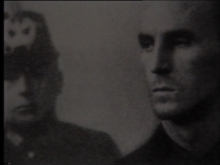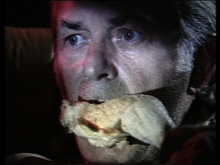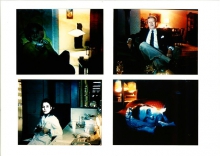Re-enactment Videospiegel
Re-enactment Videospiegel
Videospiegel – the first programme of VideoFilmFest '88
The connection between the video festival, the work and the artists is somewhat loose. Successful videos feature at countless festivals, but often their creators do not even attend the screenings. And yet every one of these screenings – at least those with videos of short running times – is totally unique. The works are gathered together in a programme which, under normal circumstances, is never screened again outside of the festival. We have therefore decided for the 25th anniversary of transmediale to once again screen as a loop the opening programme from the first VideoFest; not only does this bring together a range of remarkable videos that have rarely been seen since, but also, as an opening programme, it offers a compelling statement of VideoFest's own agenda. On one level, the first work in the programme, Flirting TV, takes the television viewer as its theme - but it also offers an assertion of the place of video art within mass media, since it was produced by ZDF. Kelvin presents the "perpetual couch potato" as grotesque, sending him back to the stone age. Funker zum Sirius is a sculptural and minimal piece of ironic science-fiction. In Believe It or Not, citing the famous Odyssee 2001, a giant Miss Piggy floats through New York by virtue of a blue-screen – a technique which had by that time become available to artists, and which would become one of the defining formal characteristics of late 1980s video art. Land of the Giants is also a work of science-fiction, in which the collaged television programme is already being controlled by computer. Variationen zu einem patriotischen Thema satirises a phenomenon that has long since disappeared from our screens: the shutdown. Accompanied in the 1980s by the national anthem, it was as if the broadcaster was advocating an appropriate sense of national mourning over the decline of state television. Two central motifs of video art in the 1980s are united in Dialog: white noise, the zero-point of analogue television, and the talking-head, the (almost) continual explaining of the world. L'image, probably the most successful work of the programme at the time, capitalised on the freedom afforded by the comparatively inexpensive medium of video to shoot a media-theoretical work of science-fiction. A counter-point to the entire programme, and indeed to a lot of the issue-driven video art of the time, is Gegen Gefühls Debilität; here too, television images are quoted, but their context within the seductive montage remains as puzzling as the rest of the work. - Marcel Schwierin









